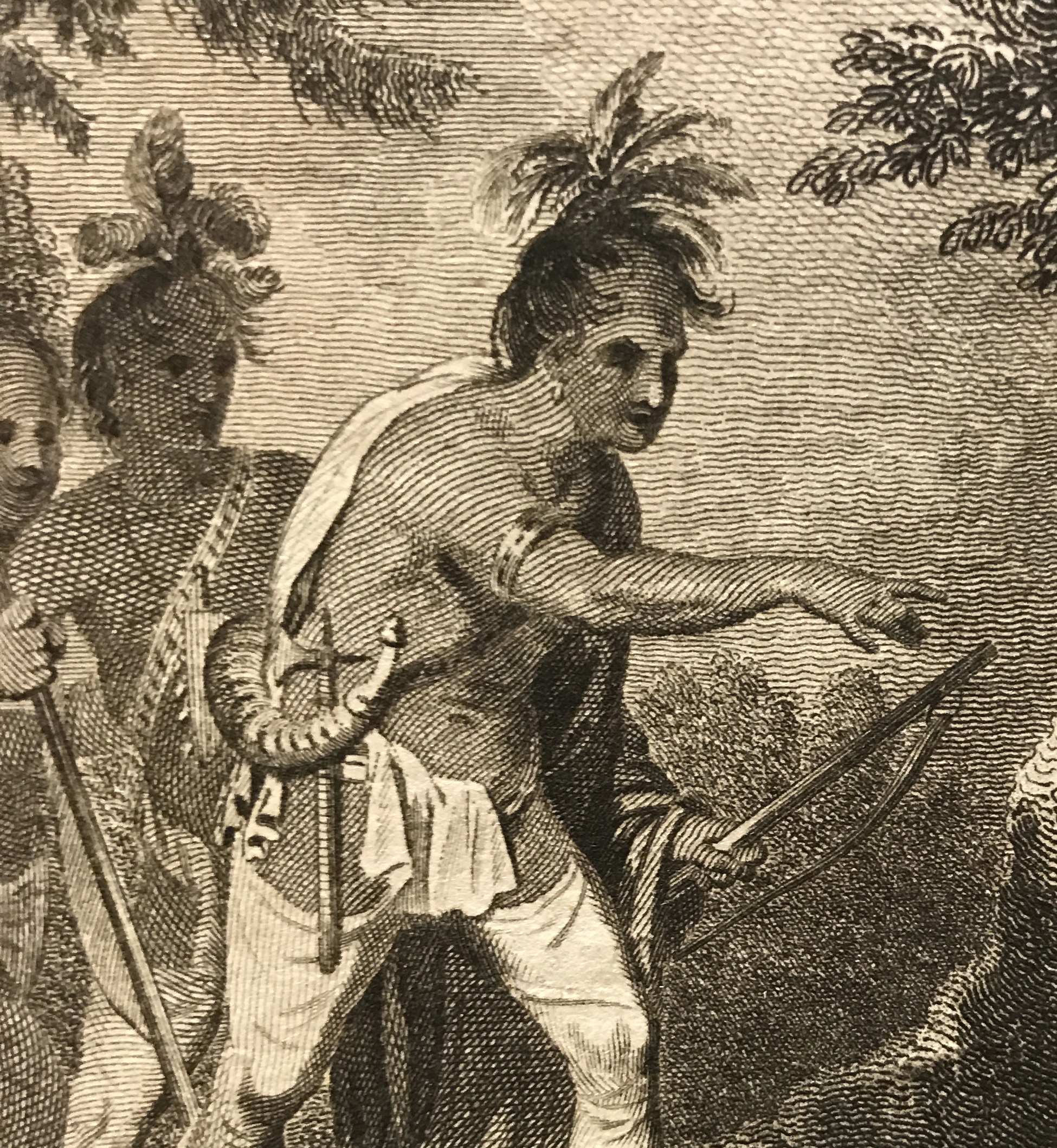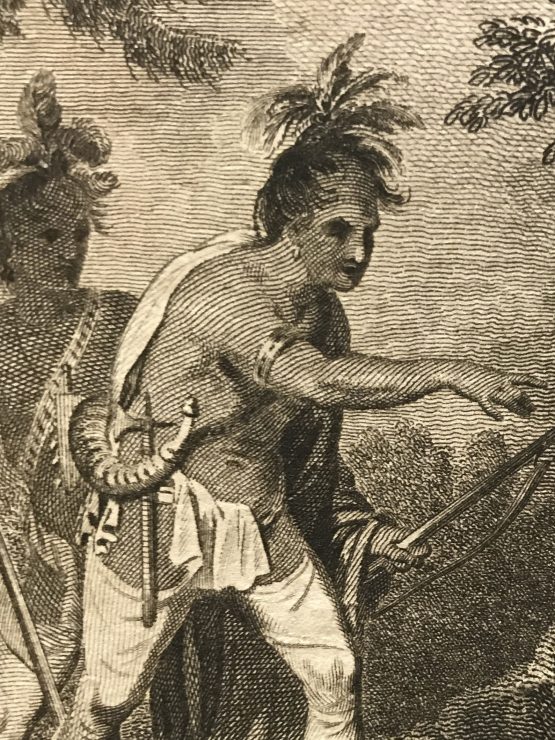During the days preceding April 30th of 1774, a brutal massacre of American Indians was being plotted by about two dozen frontier malcontents roughly 40 miles northwest from Pittsburgh.
Tensions in the Ohio Country between the Native inhabitants and the steady tide of frontier settlers were already running high. Encouraged by vague warnings of a possible new war with the Ohio tribes, a frontiersman named Daniel Greathouse raised a small force of men from local settlements on the Virginia side of the river. Many, including himself, were in their 20s and were joined by a few older, but clearly not wiser, individuals. Colluding with Greathouse was Joshua Baker, who lived with his wife in a large cabin opposite Yellow Creek, where he occasionally bartered rum with traveling Indians and the inhabitants of a seasonal hunting camp near the stream’s mouth. These were mostly the extended family and relations of Logan, a Mingo of the Cayuga nation. Logan’s group was known to be of no threat to the Bakers or any of the local settlers, and Logan himself was considered a friend to many of them.

The motivations of the Greathouse cadre were largely not driven by fear, or the need to protect themselves from the local Indians, but easy murder and theft. One of those who refused to join the party recalled their recruiting pitch as, “an inducement…that they would get a great deal of plunder; further that the Indians would be made drunk by Baker, and that little danger would follow the expedition.”
By mid-day of the 30th, about a dozen Indians had been slaughtered. The first were murdered in Baker’s cabin, where they had been invited to drink and socialize. Others, approaching in canoes to check on their comrades, were shot by Greathouse’s men who were concealed along the banks of the Ohio. Period accounts relate a dozen were killed in mere minutes, falling to rifle shots, tomahawks, and knives. Among the slain were Logan’s younger brother and a pregnant cousin, whose unborn infant was ripped from her womb and slung over a pole in front of Baker’s cabin. Before being shot in the head at point-blank range, she had begged for the life of her young daughter, whose white father, trader John Gibson, was well known to her assailants. Perhaps fearing some future retribution from Gibson, the toddler was spared by the murderers.
Those Indians who remained at the Yellow Creek village fled at the sound of gunfire and sent for Logan, who was traveling at the time. His response to the slaughter and betrayal would make him a figure feared throughout the frontier during the summer of 1774, from Pennsylvania to Tennessee, as he sought his revenge in deaths and captives. The massacre and his response were the final sparks that ignited the conflict known as Lord Dunmore’s War later that year.
By the fall of 1774, the conflict was wrapping up in a peace treaty between the tribes of the Ohio Country and the colony of Virginia at Camp Charlotte, near present-day Circleville, Ohio. Logan was called for, but fearing for his life, he refused to attend. Instead he sought out John Gibson, and related to him a message for Virginia’s governor, Lord Dunmore.
Known as “Logan’s Lament,” it has been recognized for over two centuries for its poignancy and eloquence:
“I appeal to any White man to say if ever he entered Logan’s Cabin hungry and I gave him not meat, if ever he came cold or naked and I gave him not Cloathing. During the Course of the last long and bloody War, Logan remained Idle in his Tent an Advocate for Peace; Nay such was my love for the Whites, that those of my own Country pointed at me as they passed by and said Logan is the friend of White men: I had even thought to live with you but for the Injuries of one man: Col. Cresop, the last Spring in cold blood and unprovoked cut off all the Relations of Logan not sparing even my Women and Children. There runs not a drop of my blood in the Veins of any human Creature. This called on me for Revenge: I have sought it. I have killed many. I have fully glutted my Vengeance. For my Country I rejoice at the Beams of Peace: But do not harbour a thought that mine is the Joy of fear: Logan never felt fear: He will not turn his Heal to save his life. Who is there to mourn for Logan? Not one.”
Logan himself would join the British at Detroit once the Revolutionary War began, participating in further raids against Americans in the backcountry. He turned to drink for comfort and dealt poorly with power and sway brought by his fame, which allowed him to influence younger Indian men and override traditional leadership. Because of this, in 1780 he was put to death by his own people at the hands of a nephew, ironically one of his only surviving family members.
While Logan was sure his own death would go unmourned, join us in remembering him and his fallen loved ones on the anniversary of the day that forever changed his life.
Alan Gutchess is the director of the Fort Pitt Museum.
